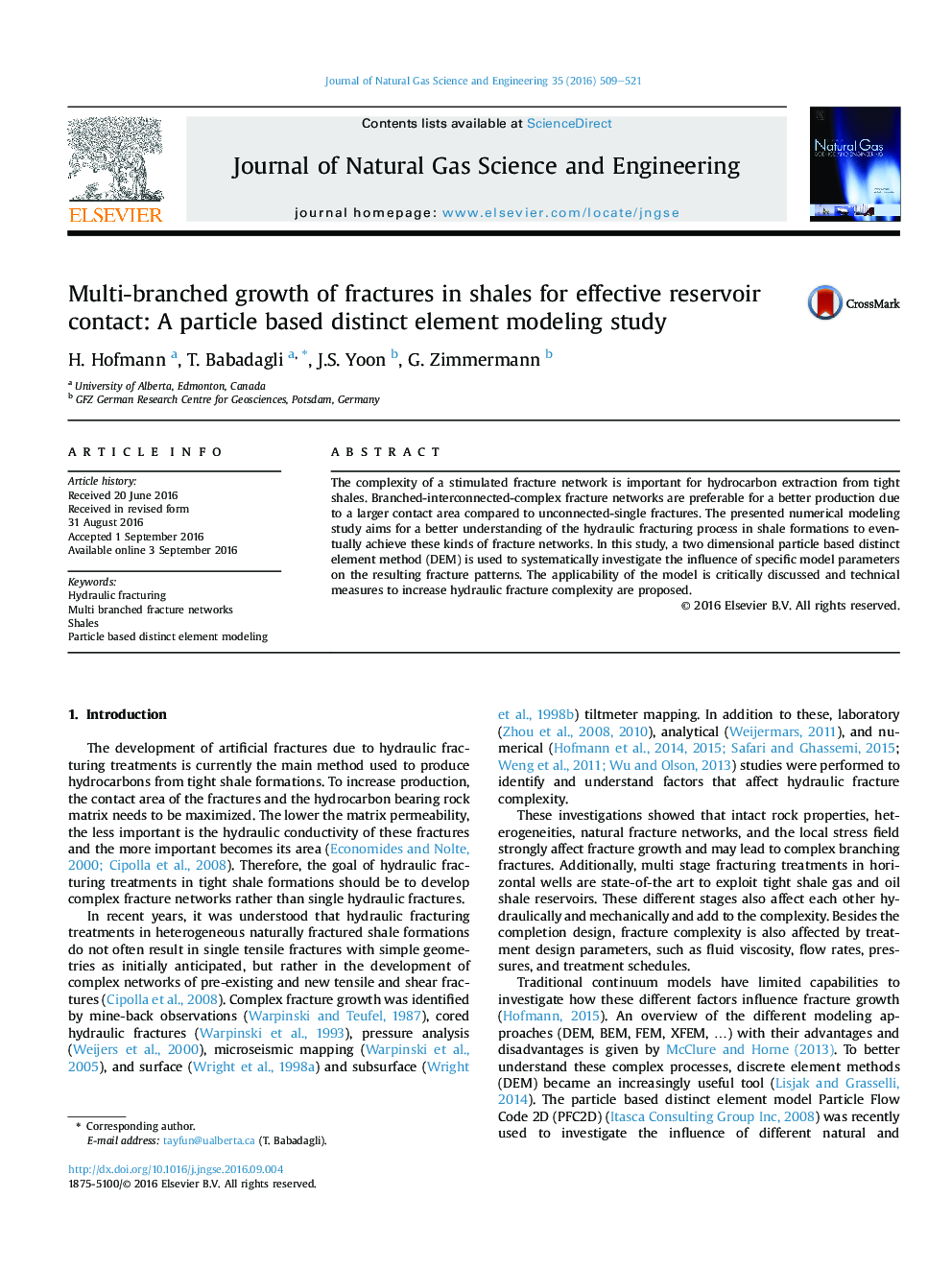| Article ID | Journal | Published Year | Pages | File Type |
|---|---|---|---|---|
| 6481563 | Journal of Natural Gas Science and Engineering | 2016 | 13 Pages |
â¢Natural and engineering factors increase the complexity of hydraulically stimulated fracture networks.â¢Weak rocks with smooth fracture walls, low stiffness, and high permeability increase network complexity.â¢By injecting large volumes of low viscosity fluids at high rates, network complexity can be increased.â¢The influences of particle-based DEM model parameters on fracture growth are identified.
The complexity of a stimulated fracture network is important for hydrocarbon extraction from tight shales. Branched-interconnected-complex fracture networks are preferable for a better production due to a larger contact area compared to unconnected-single fractures. The presented numerical modeling study aims for a better understanding of the hydraulic fracturing process in shale formations to eventually achieve these kinds of fracture networks. In this study, a two dimensional particle based distinct element method (DEM) is used to systematically investigate the influence of specific model parameters on the resulting fracture patterns. The applicability of the model is critically discussed and technical measures to increase hydraulic fracture complexity are proposed.
